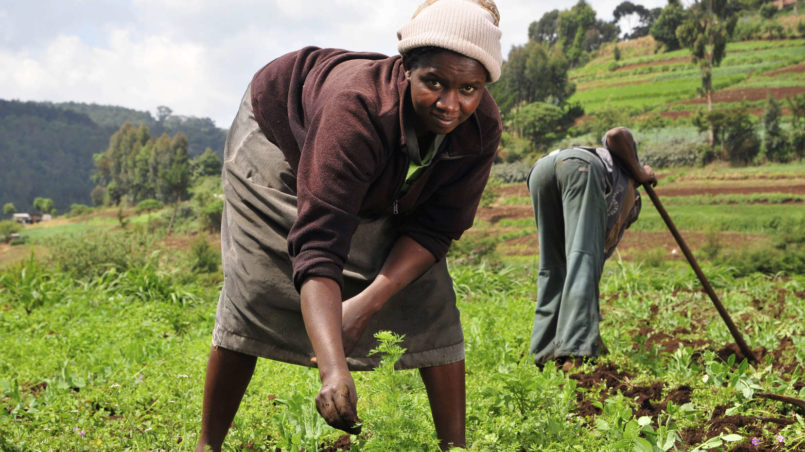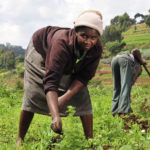Microcredits: Can Poverty be Tackled by Entrepreneurship?

Microcredits seem to be an interesting way of overcoming poverty in developing countries. But does the concept deliver what it promises?
Microcredits are loans with very low loan amounts that are granted to individuals or small communities in developing countries in order to enable these people to set up a small self-employed business. Through this special form of “empowerment”, the inhabitants of disadvantaged countries are to be given the opportunity to take care of their own economic development and to earn a sufficient income for themselves and their families.
In the rural areas of developing countries, poor subsistence agriculture is usually the basis of their livelihoods, which is often inadequate. There is hardly any opportunity for paid work, and if there is, most of the time it concerns an activity which is paid a daily amount, without a reliable and regular income.
In industrialised countries, this problem is usually solved by a bank loan. However, most people in developing countries are not “bankable” because they are largely without property and cannot provide any collateral: a regular income does not exist, the property is either non-existent or cannot be adequately documented. Therefore, no help can be expected from normal banks. Informal money lenders exploit this gap and often drive their clients into long-term debt bondage with excessive interest rates. Craftsmen are in many cases dependent on raw material suppliers who supply them at excessive prices and intermediaries who hardly leave any profit.
This is where special non-profit oriented microcredit institutions come in. The best-known of these is the Grameen Bank, which was founded in Bangladesh in 1976 by the economist Muhammad Yunus. Yunus gained worldwide attention when he and his institute were awarded the Nobel Peace Prize in 2006.
The Grameen Bank, whose concept has been taken up by numerous other institutions and has also been implemented in other countries, grants loans without the usual material collateral required by banks and instead relies primarily on the social component to ensure repayment: the bank does not grant its loans to individuals, but only to small groups whose members support and motivate each other, but also have to provide surety for each other.
The resulting social control and simultaneous support are regarded as one of the success factors of the model: the borrowers – almost exclusively women – are anxious to repay their loans in any case, so as not to lose face within their society.
The borrowers, who often have many ideas, but hardly any entrepreneurial experience and mostly a very low level of education, are also advised and supported in the long term in order to be able to develop and successfully implement a realistic concept. Serious programmes also include training on the fundamentals of corporate governance (“financial literacy”).
In the still clearly patriarchal societies of these countries, women are usually severely disadvantaged. One of the arguments in favour of this preference is that they can gain more self-confidence within and outside their families by setting up a successful business and become a role model for other women in this respect.
In addition, the targeted support of women would significantly reduce the risk of poverty for their children, because women would invest their surplus capital in the education of their children. And finally, experience has shown that women are more careful with borrowed money than men.
Practical experience at least seems to confirm that women rather than men tend to take care of their own family, show a greater sense of responsibility for other people and are very reliable,
writes the microfinance wiki.
The advantages of the concept seem convincing: microcredits are a kind of “development aid from below” and would release entrepreneurial energy instead of turning entire societies into passive recipients of aid. The fact that capital is only borrowed and not given as a gift puts the borrowers under gentle pressure to think entrepreneurially and to build up a sustainable, functioning existence.
So far, the concept of microcredits has been used mainly in Bangladesh and India, but also in Africa and South America. Even though microcredits cannot be regarded as a “miracle cure” against poverty in developing countries (the causes of poverty are too multifaceted and complicated), the microcredit institutions report on numerous positive case studies: “In almost all studies, an increase in income through investment in their own small business has been observed,” according to the Microfinance Wiki (Report: Ökonomische Effekte durch Mikrofinanz). It is reported that the private life situation of the borrowers and their families would often improve rapidly and decisively. Since borrowers spend most of their money in their immediate surroundings, local economic cycles can gain momentum, which also benefits neighbours.
Microcredit banks also report very low default rates: typical repayment rates are over 90%, the Grameen Bank reports about 95% (Report: Credit Delivery System). This means that less than 10% of the loans cannot be repaid and would have to be written off by the bank as bad debts – a very low figure by international standards. The proponents of the model see this quote in particular as proof that even very poor people are basically creditworthy and can be integrated into functioning economic cycles.
So can the microcredit model really be an effective means of combating poverty in developing countries and, above all, free women from the poverty trap through targeted empowerment? Not everyone sees it that way – especially in recent years, criticism of the microcredit model has been raised, which has been partly devastating. Read more in the second part of this series!
Translated into English: Anna Dichen
Credits
| Image | Title | Author | License |
|---|---|---|---|
 |
2DU_Kenya4_(5367330322)- | CIAT | CC BY-SA 2.0 |

[…] the first part of my series of articles, the principle of the microcredit system was explained. However, there is […]